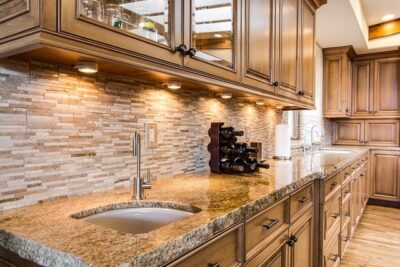Stone cladding is one of the most common types of facades. Considering that weather conditions vary in different locations and there are also different styles such as Roman, minimal, modern, etc., for facade design, choosing the appropriate stone for the cladding is of great importance. Sometimes we encounter individuals who, due to their lack of awareness, rely solely on the advice of others for selecting the suitable stone and end up facing difficulties.
Therefore, we have undertaken research and exploration in reputable articles and have consulted knowledgeable and experienced individuals in this field to prepare an article that assists you in this selection. Prior to that, we deemed it necessary to initially address the advantages and disadvantages of using stone in facades.
Advantages of Stone Cladding
To express theadvantages of using stone in facades, we can refer to the general characteristics of natural stones, including:
- Suitable compressive strength
- Fire resistance
- Variety in design and color
- Wide and easy availability
- Wide price range
- Resistance to ultraviolet radiation and more.

All of these factors combined have made stone the most common material for exterior cladding.
Disadvantages of Stone Cladding: However, the use of this material in exterior facades has certain disadvantages that can be mitigated with the following measures. These disadvantages include:
- Heavy Weight: The weight of stone can lead to an increase in the overall weight of the building. Additionally, since cement is used for its installation, the final weight becomes significantly higher. In other countries, different materials are used for stone installation, which is more effective in building design. This has made stone selection less suitable for high-rise buildings unless strong and robust structures are used.
- Alteration in Appearance and Deterioration of Some Stones in Different Weather Conditions: Certain natural stones are affected by various weather conditions, but this problem can be solved with proper selection. For example, Chinese stones are compatible with different weather conditions. However, marble changes color when exposed to sunlight.
- High Variability in Sorting of Each Stone: Natural stones are extracted from different mines in nature and have different visual and material characteristics. Each stone is suitable for different parts of the building.
Considering the aforementioned points, an appropriate stone cladding should possess characteristics that are suitable for the specific weather conditions of the area and the architectural style of the building.

